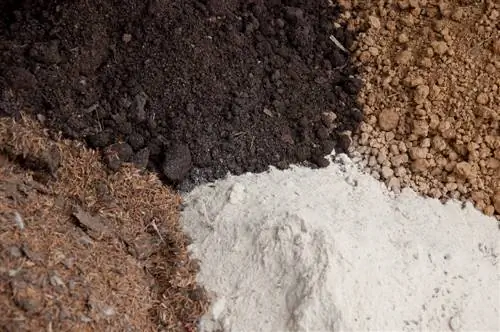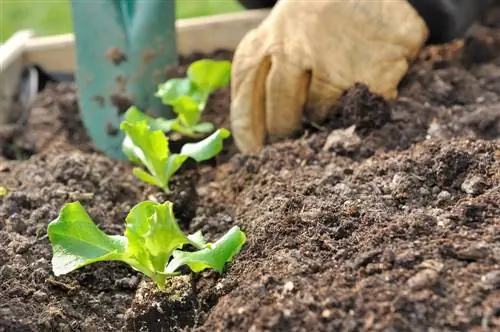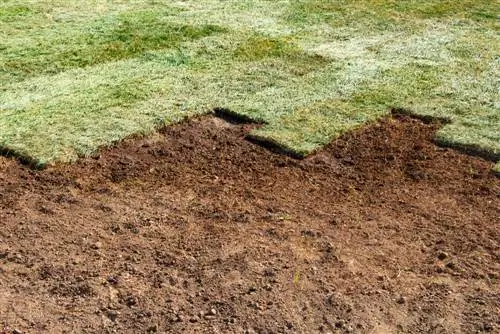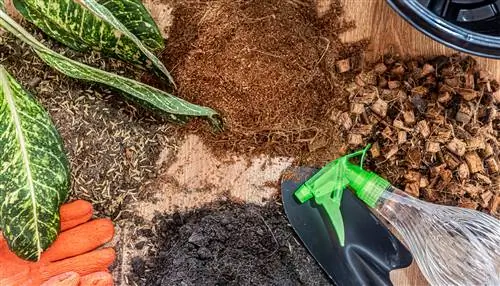- Author admin [email protected].
- Public 2023-12-25 17:45.
- Last modified 2025-01-23 11:22.
Potting soil is not a cheap item if it is to be of good quality. If you have a lot to plant out in spring, you should consider making your own potting soil. The ingredients are usually available in the garden, special additives can be bought in specialist stores.
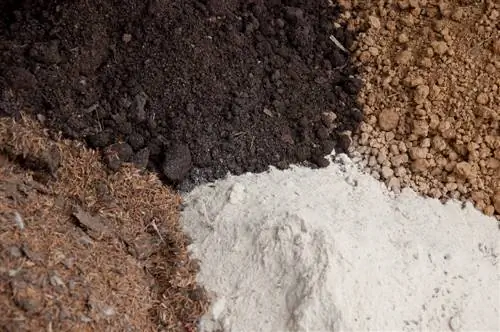
How can I mix potting soil myself?
To mix potting soil yourself, you need mature compost, fiber (peat, coconut fiber, wood fiber or bark humus), sand, horn shavings or flour and primary rock powder. Mix equal parts compost and fiber, add sand and fertilizer, and allow the soil to rest before using.
What belongs in the potting soil?
The basis for good potting soil is mature compost, which should preferably come from your own compost box. If you don't make your own compost, you can get the amount you need from a composting facility, usually for a small price.
About half of the potting soil should consist of compost, the other half of peat. If you avoid using peat for environmental reasons, you can use coconut fiber, wood fiber or bark humus instead. The fibers are important for the earth's optimal water storage. This can be further strengthened by adding perlite (granules made of volcanic glass). Sand is added so that excess water or rainwater can drain away easily. Primary rock flour, horn shavings or horn meal provide the necessary nutrients.
Mix your own potting soil
With the necessary ingredients and a little work, you can mix the best potting soil that is tailored to your needs.
- Take a large container where you can mix well. For example, a food barrel or a wheelbarrow is suitable.
- Add equal parts mature, crumbly compost and fiber to the container.
- Mix the soil.
- Now add about a shovelful of sand and mix it in well.
- Add horn shavings or meal as fertilizer. When it comes to quantity, follow the manufacturer's instructions.
- A dose of primary rock flour serves to improve the soil.
- Mix the soil well again.
- Let the soil rest for a few days before using.
A small amount of old soil can also be mixed into the new potting soil. However, it should be checked for pests before use. If you want to be on the safe side, sterilize the soil in the oven at 100 degrees.
Less nutrient-rich soil is required for the cultivation of herbs or weak feeders. A little more sand and a little clay granules make the soil ideal for Mediterranean flowers or herbs. The heavy feeders such as tomatoes, pumpkins, cucumbers or zucchini need a lot of food to thrive optimally. You can mix in a little more compost here.
Information about Terra Preta, the Black Earth, has been compiled for you in this article.

